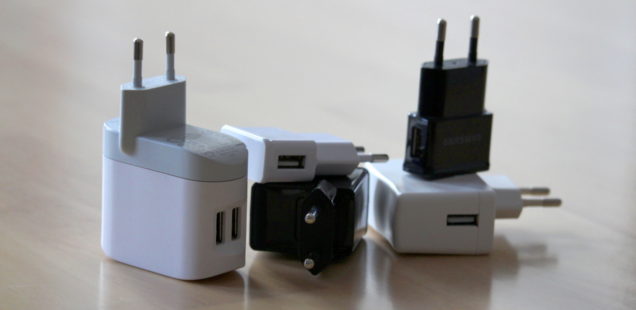
Raspberry Pi – Recommendation: The right power supply
The most important component for the stable operation of the Raspberry Pi is the power supply. It is especially with Raspberry Pi one of the underestimated sources of error. Experience has shown that most problems, such as instability, frequent errors and crashes, are due to an unreliable power supply. Therefore one should not reach for the next best no-name mobile phone power supply and rather invest one or the other Dollar more in a high-quality power supply.
Warning against alleged “original” RPi power supplies
Amazon and eBay offer a variety of different power supplies, which are offered as apparent “original” Raspberry Pi power supplies. However, there is only one official power supply offered by the Raspberry Pi Foundation itself.
China power supplies with dubious performance values
Windy traders exploit the ignorance of customers and sell cheap 1€ China power supply at overpriced prices using this trick. What is even worse, however, is that most of these power supplies offered as “original” do not meet the performance requirements to some extent. Because when it comes to the power supply,”Buy cheap, buy twice!” and on the Internet you will find frightening examples where cheap power supplies have really gone up in flames.
Requirements for the power supply unit
According to the specification, the Raspberry Pi requires a voltage of 4.75 – 5.25 volts (via USB). Experience has shown that Raspberry Pi is very sensitive to voltage fluctuations, especially when they fall below 5V. Then the above mentioned problems are usually the result. For stable operation, a 5.1 volt power supply unit is therefore used to compensate for the losses caused by the plug connections and cables.
Typically, the Raspberry Pi requires between 700mA and 1000 mA. Depending on whether you are talking about the bare Raspberry Pi board or with connected monitor, keyboard, mouse and Ethernet/LAN. In addition, every USB device without its own power supply must be powered by the Raspberry Pi. The current consumption can vary greatly depending on the device. For a stable operation of the Raspberry Pi 3 the requirements for the power supply are therefore min. 2000 mA.
Would you like a little more?
In terms of power and current consumption, a power supply unit must never be operated at its nominal value. I.e. a power supply with 2000 mA nominal value will inevitably get into an unstable state if you want to draw the full 2000 mA from it. Therefore a good 20% buffer should be included and at least a 2500 mA power supply should be used.
Sample calculation RPi 3 B:
| Raspberry Pi | max. 700 mA |
| GPIO-Ports | max. 50 mA |
| HDMI | ca. 50 mA |
| Ethernet/LAN | ca. 60 mA |
| CSI camera module | ca. 250 mA |
| per USB device | ca. 200 mA |
Recommended Raspberry Pi power supplies
[Last update: 04/24/2018]
 Notation
Notation
Especially with cheap China power supplies I had very negative and sometimes dangerous experiences. The following selection contains therefore only high-quality power supplies, which I have tested several times and personally in use. I can therefore recommend them to others with a clear conscience.
Power supplies for Raspberry Pi 3 / 2 / 1 / Zero
DIN rail power supplies for Raspberry Pi

